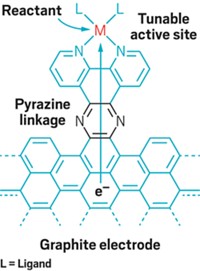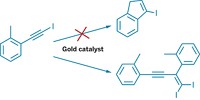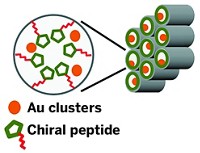Advertisement
Grab your lab coat. Let's get started
Welcome!
Welcome!
Create an account below to get 6 C&EN articles per month, receive newsletters and more - all free.
It seems this is your first time logging in online. Please enter the following information to continue.
As an ACS member you automatically get access to this site. All we need is few more details to create your reading experience.
Not you? Sign in with a different account.
Not you? Sign in with a different account.
ERROR 1
ERROR 1
ERROR 2
ERROR 2
ERROR 2
ERROR 2
ERROR 2
Password and Confirm password must match.
If you have an ACS member number, please enter it here so we can link this account to your membership. (optional)
ERROR 2
ACS values your privacy. By submitting your information, you are gaining access to C&EN and subscribing to our weekly newsletter. We use the information you provide to make your reading experience better, and we will never sell your data to third party members.
Synthesis
Two-Faced Catalyst
Novel design permits tandem aqueous- and organic-phase reactions in a biphasic solvent system
by Stephen K. Ritter
January 4, 2010
| A version of this story appeared in
Volume 88, Issue 1
Tandem reactions taking place at the interface between organic and aqueous layers in a biphasic solvent system can now be catalyzed by different parts of the same nanoparticle, thanks to a new design by Daniel E. Resasco and coworkers of the University of Oklahoma (Science 2010, 327, 68). The team started by creating MgO-based nanoparticles, which can serve as a basic catalyst. The researchers then grew carbon nanotubes on the MgO surface and adsorbed palladium onto the nanotubes. The MgO surface prefers to be in water, but the nanotubes prefer an organic solvent, thus the nanoparticles end up residing in and stabilizing the emulsion layer of a water/emulsion/decalin solvent system. Resasco and coworkers used the recyclable nanoparticles to develop a tandem reaction that is useful in biofuel production, where the reaction mixture typically has a complex composition. In the first step, MgO catalyzes coupling of 5-methylfurfural and acetone in the aqueous phase. The product slips into the organic phase where a subsequent Pd-catalyzed hydrogenation takes place.





Join the conversation
Contact the reporter
Submit a Letter to the Editor for publication
Engage with us on Twitter